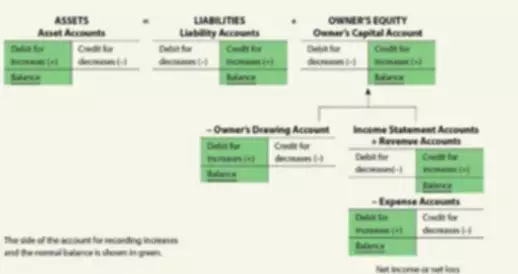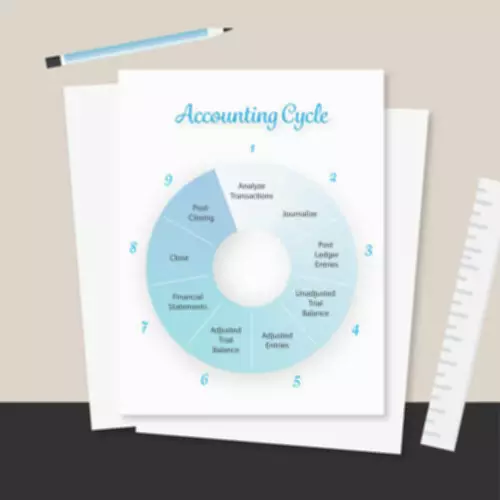- Have any questions?
- 949-354-3950
- [email protected]
Double Entry: What It Means in Accounting and How It’s Used
Internet dating a Latin Woman Can be quite a Fun, Easy, and Rewarding Experience
July 3, 2022Meet a Single Ukrainian Woman
July 8, 2022Double Entry: What It Means in Accounting and How It’s Used
Content

The same goes if you invest your own money into your startup business. At the same time, owner’s equity increases because now you’re a shareholder.
- This then gives you and your investors or bank manager a good picture of the financial health of your business.
- Credits are accounting entries that either increase a liability or equity account, or decrease an asset or expense account.
- If you pay your rent via cheque, you will credit the bank account in that case.
- Payroll Manage employee salaries, deductions and benefits effortlessly.
- It’s possible to manually create multiple ledger accounts, but if you’re making the move to double-entry accounting, you’ll likely want to make the switch to accounting software, too.
- The Ascent is a Motley Fool service that rates and reviews essential products for your everyday money matters.
- Mary Girsch-Bock is the expert on accounting software and payroll software for The Ascent.
Following the earlier example used in single-entry accounting, here’s a presentation of the same data in a double-entry accounting system. Having presented a good case for single-entry accounting, we’ll look at double-entry accounting. Double entry accounting requires that what we do one side – we need to do to the other side or we need to negate what we did to that one side. This post is to be used for informational purposes only and does not constitute legal, business, or tax advice. Each person should consult his or her own attorney, business advisor, or tax advisor with respect to matters referenced in this post. Bench assumes no liability for actions taken in reliance upon the information contained herein.
What is the basic rule of double-entry bookkeeping?
Read our comprehensive accounting reviews to learn more about these programs and find other great double-entry options. While single-entry has its perks, when discussing Single entry vs Double Entry, there are advantages double-entry has over single entry.

This bookkeeping system ensures that there is a record of every financial transaction, which helps to prevent fraud and embezzlement. For example, a copywriter buys a new laptop computer for her business for $1,000. She credits her technology expense account for $1,000 and debits her cash account for $1,000. This is because her technology expense assets are now worth $1000 more and she has $1000 less in cash. The earliest extant accounting double entry accounting records that follow the modern double-entry system in Europe come from Amatino Manucci, a Florentine merchant at the end of the 13th century. Manucci was employed by the Farolfi firm and the firm’s ledger of 1299–1300 evidences full double-entry bookkeeping. Giovannino Farolfi & Company, a firm of Florentine merchants headquartered in Nîmes, acted as moneylenders to the Archbishop of Arles, their most important customer.
How to Use Double-Entry Accounting
Debits do not always equate to increases and credits do not always equate to decreases. This is always the case except for when a business transaction only affects one side of the accounting equation.

This means that you are consuming the cash asset by paying employees. It is not used in daybooks , which normally do not form part of the nominal ledger system.
How To Do Double Entry Accounting
In reality, even a small business may identify a hundred or more such accounts for its accounting system, while a large company may use many thousands. Nevertheless, for bookkeeping and accounting purposes, all named accounts fall into one of the five categories above . After you make all the entries for the transaction, https://www.bookstime.com/ check that your books are balanced. Keep in mind that debits and credits offset each other, and the sum of debits should be equal to the sum of credits. Post journal entries to your general ledger with the double-entry system of bookkeeping. Single-entry accounting is less complex than double-entry accounting.
- Under this approach, assets and liabilities are not formally tracked, which means that no balance sheet can be constructed.
- For this reason, the balance in a contra liability account is a debit balance.
- If you are a person who pays great attention to details without leaving anything out of sight, then your accounting method would mean a lot.
- The trial balance labels all of the accounts that have a normal debit balance and those with a normal credit balance.
- In double-entry bookkeeping, debits and credits are terms used to describe the 2 sides of every transaction.
- While single-entry has its perks, when discussing Single entry vs Double Entry, there are advantages double-entry has over single entry.
Every entry to an account requires a corresponding and opposite entry to a different account. The double-entry system has two equal and corresponding sides known as debit and credit. A transaction in double-entry bookkeeping always affects at least two accounts, always includes at least one debit and one credit, and always has total debits and total credits that are equal. The purpose of double-entry bookkeeping is to allow the detection of financial errors and fraud. In the double-entry system, transactions are recorded in terms of debits and credits. Since a debit in one account offsets a credit in another, the sum of all debits must equal the sum of all credits.
Want More Helpful Articles About Running a Business?
FREE INVESTMENT BANKING COURSELearn the foundation of Investment banking, financial modeling, valuations and more. As the liabilities are well mentioned, it is easier to identify the financial obligations. There is a unique reporting structure, and, therefore, the records remain well-organized. The Balance uses only high-quality sources, including peer-reviewed studies, to support the facts within our articles. Read our editorial process to learn more about how we fact-check and keep our content accurate, reliable, and trustworthy.
- Liabilities and equity affect assets and vice versa, so as one side of the equation changes, the other side does, too.
- Harold Averkamp has worked as a university accounting instructor, accountant, and consultant for more than 25 years.
- In other words,debits and creditsmust also be equal in every accounting transaction and in their total.
- We believe everyone should be able to make financial decisions with confidence.
- Alongside your income statement and cash flow statement, it gives you, your accountant, and your financial investors a well-rounded snapshot of your business’s financial health.
- In other words, overall debits must always equal overall credits.
